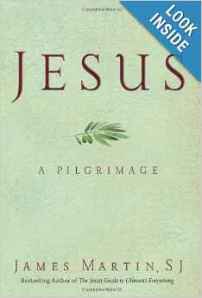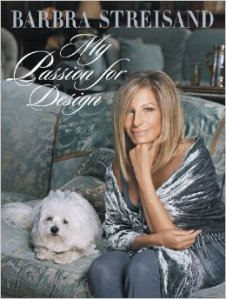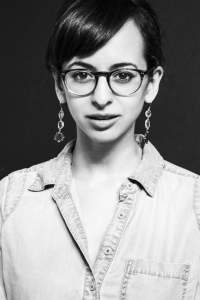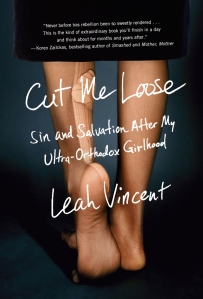 It’s here. The Wednesday before the first seder, the day when countless newspapers and blogs post their Passover recipes for readers. Here is a roundup of some of the notable ones:
It’s here. The Wednesday before the first seder, the day when countless newspapers and blogs post their Passover recipes for readers. Here is a roundup of some of the notable ones:
What is Pesach without Joan Nathan? Joan leads off The Times coverage with artichokes. I feel so Roman. Her fried artichokes are bylined from Italy and includes a slideshow with Paola Modigliani Fano
Mrs. Fano, a retired schoolteacher in Rome resides in the 16th-century Palazzo Cenci near the Jewish Ghetto. She presented Joan with a facsimile of Donatella Limentani Pavoncello’s 1880 cookbook, “La Cucina Ebraica della Mia Famiglia” (“The Jewish Cooking of My Family”) from Carucci (1982), and a coltello da carciofi, a knife for cutting artichokes.
The recipe is here.

Fried Artichokes
Additionally, Florence Fabrikant at The Times highlights
seder plates. And David Tanis, the famed chef who says he became interested in cooking due to his Jewish heritage highlights a
Moroccan Fish.

Torte
If you skip over their review of a new Mexican-Taiwanese fusion restaurant in Brooklyn, you make it to
Melissa Clark’s profile of Seder desserts. She asks a fifth question, Why on this night should you “make a chocolate cake with matzo flour when a flourless chocolate torte is going to be so much better anyway?”
Melissa Clark’s recipes include ones for macarons, toffee, and a hazelnut citrus torte. A link to the dessert video is here.
 Over at the Boston Globe, they picked up Leanne Italie’s Associated Press story on unique matzo. Titled “Not Just Your Grandmother’s Matzo Anymore,” the story shares ideas on new matzo recipes, such as Martha Stewart Living’s chocolate covered matzo, topped with nuts and dried fruit. Martha Stewart’s Living’s Matzo Ball Soup recipe can be found here. The Newark, NJ Star Ledger picked up the same story from the AP.
Over at the Boston Globe, they picked up Leanne Italie’s Associated Press story on unique matzo. Titled “Not Just Your Grandmother’s Matzo Anymore,” the story shares ideas on new matzo recipes, such as Martha Stewart Living’s chocolate covered matzo, topped with nuts and dried fruit. Martha Stewart’s Living’s Matzo Ball Soup recipe can be found here. The Newark, NJ Star Ledger picked up the same story from the AP.
The Boston Globe also features stories on Passover Profiteroles, Passover Apple Pie, Liora Kushner’s Moroccan Mufleta, and Gefilte Fish in gleaming glass jars. Debra Samuels quotes Rick Taylor, a fish monger. He says that half of Brookline, Massachusetts is searching for fresh whitefish and carp. Samuels rates six brands of bottled gefilte fish and rates Meal Mart Kosher Gefilte Fish in Jellied Broth as the winner. Rokeach got a “feh.” Manischewitz was rated as pretty in appearance, but bland in taste.
Speaking of Man, Man, Manischewitz… a Bain affiliated private equity fund has purchased the 126 year old brand. Good luck to Sankaty Advisors. (Sankoty is a Nantucket Indians word for “highlands”)

Karaite Matzo
In the Beltway at The Washington Post, they bypass the Jewish recipes and go FULL KARAITE. Yes,
Remy Pessah of Mountain View, Calif., tells The Washington Post that Karaite seders have no “Four Questions,” and they eat a lot of lamb. Their recipes are for lamb, maror, keshk, and
Karaite Matzo. (The seder recipes are after the recipe for Clams with Israeli Couscous) The Washington Post also recommends Recanati Yasmin White 2012 from Israel, and Ella Valley Vineyards Cabernet Sauvignon 2010, also from Israel.
The Los Angeles Times highlights bread this week. Seriously. Their Passover recipes probably get published later this week. In the interim, check the Jewish Journal for their drunken Passover grilled cheddar cheese recipe.
The UT (Union Trib) in San Diego offers a five page primer on Matzo Balls, and a recipe from chef Bobby Flay and the Dallas based chef Tina Wasserman (author of Entree To Judaism).
Flying over to Chicago, Phil Vettel of The Chicago Tribune makes dining recommendations; Peggy Wolff explains kitniyyot and her longing for corn, rice, millet, sesame and poppy seeds, and legumes such as lentils, chick peas, fava beans and edamame; and a recipe for lemon bar matzo is explained. The also explain why quinoa is Kosher for Passover. If The Chicago Tribune is blocking you, screw them, and check out the salad recipes at The Chicago Jewish News.
The Miami Herald provides a recipe for Brisket made with Coffee and a Kosher for Passover Cream of Zucchini Soup.Over at The Gainesville Florida newspaper, Orly Padawar shares her family’s North African Passover traditions. She serves green peas, fennel and meatballs, which her mother would make for her growing up in Israel. The Sun Sentinel in Florida steals the recipe (not really) from a Boca Raton resort of a Kosher for Passover potato salad. It uses sweet potatoes, almonds, mustard, and apples.
 ABC News, along with the Tasting Table, goes south with Passover Brisket Tacos. here is the recipe for Kosher for Passover Tortillas. They also make a mash-up of Matza and Lasagna, called MATZAGNA.
ABC News, along with the Tasting Table, goes south with Passover Brisket Tacos. here is the recipe for Kosher for Passover Tortillas. They also make a mash-up of Matza and Lasagna, called MATZAGNA.
Shhh… speaking of Matzagna, Pastry Chef Rinat Tzadok has shared the macaroon recipe from Breads Bakery in Manhattan. Rinat came to NYC with owner of Breads Bakery Uri Scheft. They run the Lehamim Bakery in Tel Aviv.
The Baltimore Sun recommends 2011 Hagafen Cellars Estate Cabernet Franc, Napa, California, and the linked recipe for Pikesville Maryland Chocolate Covered Matzah.
The Detroit Free Press has a chocolate matza layered torte recipe; and @SamanthaMelamed at The Philadelphia Inquirer covers several chefs as they make matza balls with more variations than Goldberg. Recipes includes ones for Avgolematzo Soup, Not Exactly Aunt Lil’s Matzo Ball Soup, and Mushroom-Matzo-Ball Celery Root Soup. Melamed has one of the best stories of the roundup.

Ground Turkey and Quinoa Stuffed Bell Peppers
Long Island, NY
Newsday shares Rabbi Jonathan Waxman‘s Passover recipe for turkey and quinoa stuffed bell peppers. Rabbi Waxman serves Beth Sholom of Smithtown, NY. His wife, Sarrae Crane, makes her own gefilte fish from scratch, as well as chicken soup from her mother’s recipe. They also share a recipe for CURAÇAO HAROSET BALLS (take that! Meatball shop), and CHICKEN BREASTS WITH SHITTAKE MUSHROOMS AND TOMATOES, and a BEET-CUCUMBER SALAD that Rabbi Waxman serves during the Karpas portion of his seder.
The Globe and Mail in Ontario prepares Lucy Waverman’s Passover Florentines. I am not a fan of meringue, but you might be. @LucyWaverman also shares her recipes for Matzo Brei and Dorie Greenspan’s Cured Salmon that her daughter Emma has adapted to fit a seder as an alternative to gefilte fish.
The Toledo Blade focuses on gluten and Passover. It shares some gluten free, hametz free recipes for Pesach. Along with a recipe which they mention is not kosher for passover. Okay. They tell the tale of Mrs. Greenblatt who is hosting seders on the first and second nights of the holiday; she expects 21 at the table. She will serve gluten-free matzah balls in soup, gluten-free macaroni and cheese, and also a vegetarian lasagna using gluten-free matzo-style squares and Kestenbaum’s Oat Matzos from the UK.
The New Haven Register, home town of Yale University and New Haven style pizza, features UNSTUFFED CABBAGE. Author Stephen Fries made it for his mother in Florida and it impressed her. The recipe is from “A Taste of Pesach: Trusted Favorites, Simple Preparation, Magnificent Results,” a project of Yeshiva Me’on Hatorah (ArtScroll). Their BABY BELLA AND CRANBERRY BRISKET uses Chicken Broth as a base for the brisket. Who knew?
The Arkansas Democrat-Gazette shares chef Wolfgang Puck’s recipe for BRAISED VEAL SHANKS WITH DRIED FRUIT AND ALMONDS AND RED WINE SAUCE.
The Village Voice shares a recipe from Dan Cohen’s Macaroon Bible And unfortunately The Times/Picayune in New Orleans shares a yeast cake for the holiday they call “Passover/Easter.”
Thankfully up in Baton Rouge at The Advocate, they have a real Passover recipe for a Roasted Chicken. But good luck finding Kosher for Passover Brown Sugar

Individual Kugels
In Austin, Texas, four food bloggers (Floggers) got together to share some recipes.
The Austin Chronicle shares some recipes from their ebook. The four bloggers are Whitney Fisch of Jewhungry in Miami; Liz Rueven of Kosher Like Me in New York City; Sarah Lasry, aka The Patchke Princess of New Jersey; and Austin’s Amy Kritzer of What Jew Wanna Eat. Amy Kritzer’s recipe for Individual Potato and Zucchini Kugels (Pareve, Gebrokts) is highlighted.
San Francisco? Nothing. No new recipes yet. We did miss The Downtown Seder at the San Francisco JCC An import from Manhattan). It featured Napa winemakers Ernie Weir of Hagafen Cellars and Jeff Morgan of Covenant Wines who poured their premium kosher wines; a kosher vegetarian menu by Milk & Honey, entertainment by 20 artists and thinkers, including Israel-born singer David Broza, and the world premiere of Lewis Black’s video “Plague.”
Wait. I lied. The San Jose Mercury news snagged a recipe from the Wise Sons Deli. The Red Wine & Onion Braised Brisket is courtesy of Leo Beckerman of Wise Sons Delicatessen I suppose it is appropriate to dine at a place called Wise Sons and not a place called The Child Who Did Not Known Enough To Ask A Question. (And what about the Fifth Child? The one who did not even come to the seder?)
Adriana Janovich of Spokane’s Spokesman-Review writes that kosher for Passover can be easy. Her Yerushalmi Kugel
is from Jamie Geller’s “Joy of Kosher”, and it substitutes KP noodles for egg noodles.
Balaboosta in Manhattan is hosting a Passover meal of shirt ribs followed by a milk chocolate but flourless torte. Only $125. You sure she is from Israel? And Louisa Shafia is hosting a rice filled Passover dinner in Manhattan, plus you get a copy of her cookbook, The New Persian Kitchen. It is only $85 plus taxes and fee (or a nice round $100).
The JDC (Joint Distribution Committee) is sharing three unique Passover recipes from various countries. They are Kazakhstan:
Chicken Kotletky (“A La Migdal”)from of Svetlana Nezhinskaya; Uzbekistan: Mazurka courtesy of Alla Krichevskaya of Tashkent; and Kyrgyzstan: Green Borscht with Matzah courtesy of Valeria Khaimov-Levitsky.
Northern New Jersey’s Bergen Record profiles some area chefs that are preparing Passover desserts. Mark Roth, a Teaneck resident and former owner of Evviva in Manhattan’s East Village, started Tova’s All Natural (named for his 6 year old daugher), a Passover dessert business. He is busy making 10,000 macarons, which will be available in 15 kosher food stores in New Jersey. Also profiled is Israeli-born chef Tomer Zilkha, of Patisserie Florentine in Englewood, NJ. He is also baking for Passover, but his treats will be “kosher style.”
 Further North and East, in Calgary, The Calgary Herald has a recipe for a light sponge cake, made with matzo meal and potato starch that is sure to evoke memories. This recipe, from master baker Annette Lerner, appears in The Holiday Kosher Baker, by Paula Shoyer. Unlike many sponge cake recipes, it doesn’t call for the eggs to be separated. Shoyer was skeptical initially, she writes, but found that the recipe produces “a tall, light sponge cake that tastes as if you have incorporated beaten egg whites.” With less work.
Further North and East, in Calgary, The Calgary Herald has a recipe for a light sponge cake, made with matzo meal and potato starch that is sure to evoke memories. This recipe, from master baker Annette Lerner, appears in The Holiday Kosher Baker, by Paula Shoyer. Unlike many sponge cake recipes, it doesn’t call for the eggs to be separated. Shoyer was skeptical initially, she writes, but found that the recipe produces “a tall, light sponge cake that tastes as if you have incorporated beaten egg whites.” With less work.
On that note. rest, relax, have less work, and have a good Pesach

![[book]](https://i0.wp.com/www.sefersafari.com/159474677X.jpg) How to Succeed in Business
How to Succeed in Business 



















![[book]](https://i0.wp.com/www.sefersafari.com/0143123785.jpg) POKING A DEAD FROG
POKING A DEAD FROG